Chicago has a long history of supplying talented artists that work in the medium of comics. Lyonel Feininger, Jackie Ormes, Chris Ware, Anya Davidson, Nick Drnaso, Linda Barry, Emil Ferris, Lane Milburn, Ivan Brunetti, to name a few, have expanded the medium through various forms of exploration in this sequential art form while working in the city. Matthew Allison, a talented recent transplant and creator of Cankor, has landed on the northwest side from Colorado. Cankor is a mixture of sci-fi horror with a dose of psychedelic heavy metal (think & visualise, the style of 1950s era EC Horror comics meets the offspring of R. Crumb & Janis Joplin). This week the COMP Magazine ran up to Albany Park to talk with Allison about his 10 year journey in creating Cankor, the role cinema and music plays in his aesthetic investigation, the importance of maintaining a process, and what’s on the calendar for the remainder of 2023.
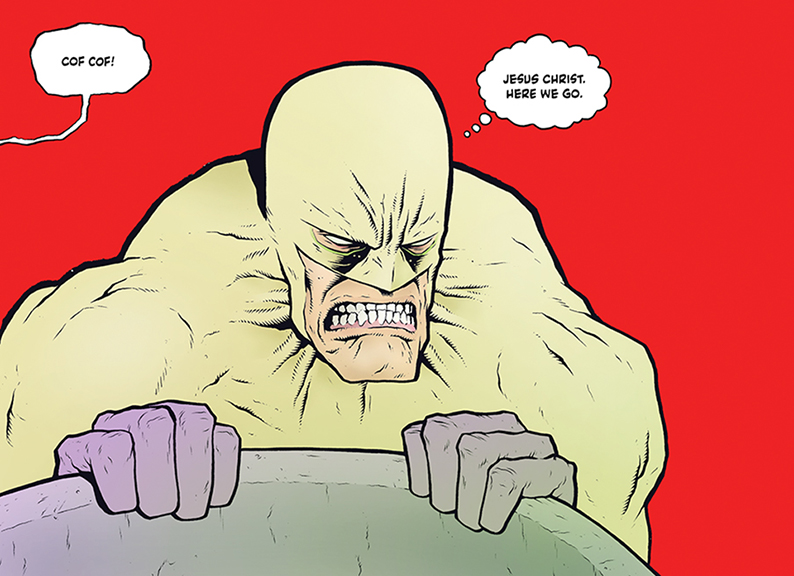
You’ve been making comics for over a decade but have been looking at comics for much longer. Can we backtrack a bit and discuss your life prior to being a creator. Specifically, can you share with us what prompted you to focus your professional career on sequential arts? Where there any inspirations? People?
My parents both encouraged my artistic endeavors and were artists themselves, although not professionally. I had art teachers that were supportive as well, but I don’t know if I ever expressed to any of them directly that I wanted to make comics. If I did discuss making comics the assumption from most people was that I wanted to draw for Marvel or DC, and even though that was true to an extent, at least as a teenager, I knew that the way those companies operated wasn’t going to allow for full artistic expression. It could be done but the handful of creators that were given free reign at the Big 2 were the exceptions. Seeing the alternative comix art boom of the late 80’s/early 90’s was inspirational because it showed me that you can have complete control over every aspect of the comics-making process and there weren’t hard and fast rules there like there was with mainstream stuff. That all hit me right after high school, in ’91-’92.
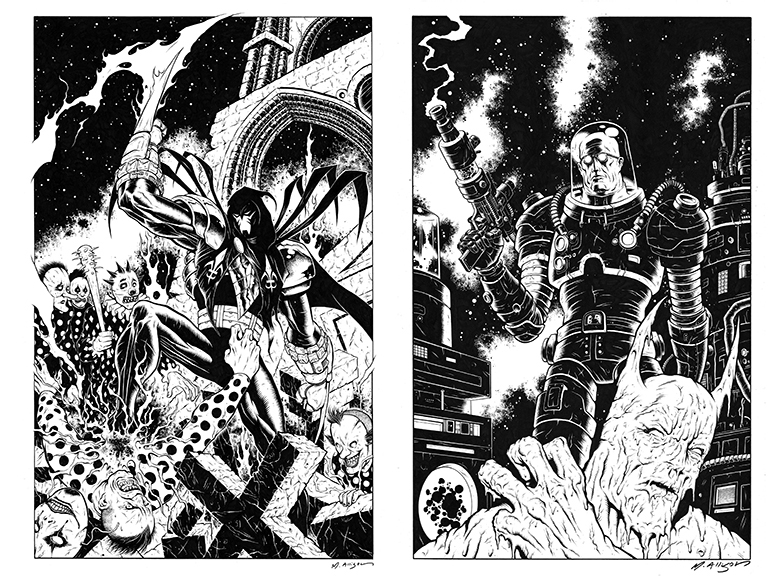
Music appears to be a central component to your practice. In your studio, I counted 3 guitars, your walls were decked out with 70-80s era rock concert posters, and there was a full rack of CDs next to your drafting desk. Can you describe your relationship to the sonic arts.
Usually, I will throw in a CD or make a mix on my iPod only a few times a week anymore. I rarely just have music on in the background because I prefer to really engage with music when I have time to listen, and I want it to sound good. My wife works from home as well and her office is directly above my studio so if I do listen to music during the day it’s on my iPod Classic with earbuds. On the rare occasion that she leaves the house I’ll play a CD in my Marantz player and crank it. In the last year or so I’ve really gotten into 5.1 Surround mixes and have a handful of albums that are mixed that way. I have a 5-speaker set-up in my studio (no subwoofer) and will spin Talking Heads or Yes in surround sound, often moving my chair to the center of the room, eyes closed, just listening.
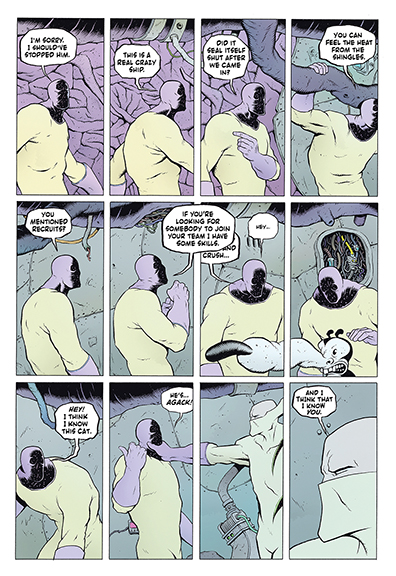
When reading Cankor, I also see direct connections with film in the layout and sequencing of this work. You have followed this medium throughout your life. You have the largest collection of obscure Asian horror films and memorabilia I have encountered. Can you discuss this interest and if (or how) it informs your aesthetic practice?
Cinema, and in particular trash cinema, is super important to me and has been since I was a kid. I was a regular reader of Fangoria and GoreZone, moving on to Psychotronic and Video Watchdog in high school. I love anything that’s dreamlike and bizarre so I’m drawn to strange films from all over the world. I would say that I dig obscure stuff but nothing is obscure anymore. In the 90’s I spent my weekends driving to different video stores in the Denver area, hunting down titles like BLOOD FREAK and LAST HOUSE ON DEAD END STREET. There was a Vietnamese gift store in town that rented Chinese VHS tapes and that became an obsession for a few years – watching crazy Hong Kong and Taiwanese horror and fantasy movies. I’d also rent from a Japanese video store – the Hong Kong stuff was often subtitled but the Japanese tapes were not, but it didn’t matter to me. In fact, it often added a mysterious element to the experience.
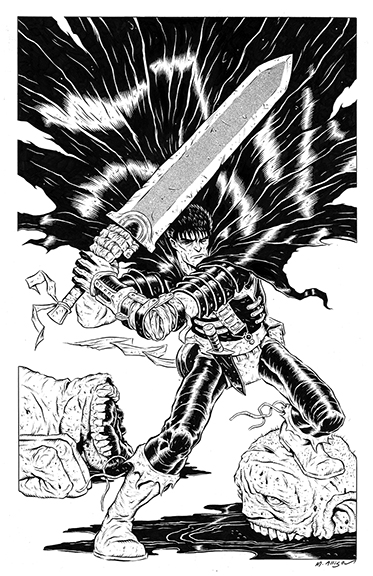
That said, I view cinema and comics as having more differences than similarities, so I don’t necessarily think in filmmaking terms while drawing. It irks me a little when people praise a comic for being cinematic because comics are a series of static images with no sound and no time constraints in terms of how long the reader takes to look at a page or panel. Very different from watching a movie unspool in a theater on a giant screen.
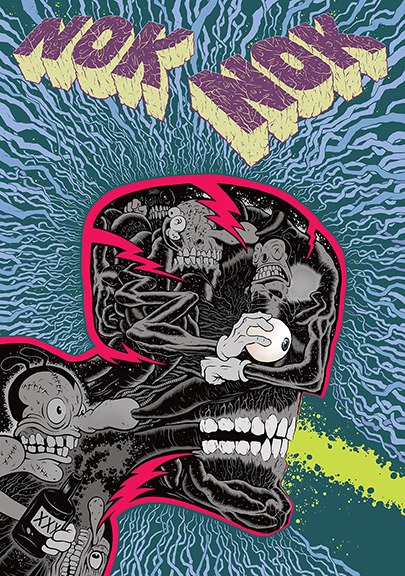
For me Cankor resides in that nebulous comic’s space between indie and the mainstream worlds. Your style can be defined as clean line and a thoughtfully precise use of colour coupled with a most strange psychedelic story. Can you discuss your journey? What did you see as your primary goal in creating this work and assembling it into book form.
When I was deep into alt-comics in the 90’s I would also pay some attention to what was happening in mainstream titles, always with a subconscious desire to do something with superheroes, even though I’d never admit it openly. When the internet started, I realized that there were a lot of people that straddled the two worlds in terms of their interest. My allegiance to The Comics Journal gave me this sense that you had to choose one or the other but clearly stuff like Marvel’s Strange Tales comics and DC’s Bizarro Comics anthology, which had indie creators tackling superhero characters, made it clear that you could go back and forth, and it was cool and accepted. That really opened me up to the idea of doing something with costumed super humans but in funky, dream-like scenarios. Anything goes.
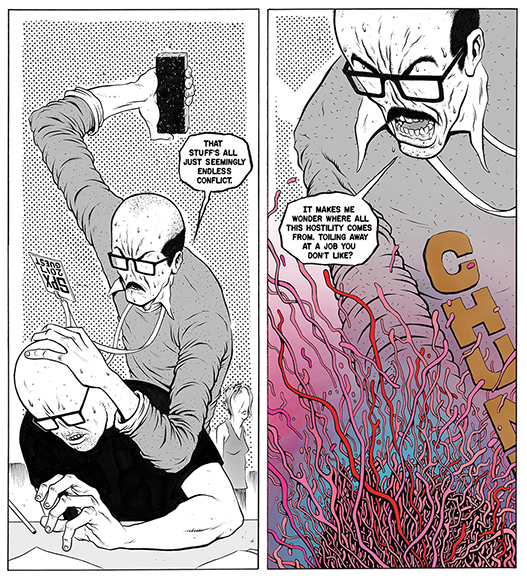
To continue the conversation on process, can you walk us through the tactile translation of your studio practice. How do you map out your ideas then realise them into physical visual form?
Most of my “writing” is done in my head, with very little plotting or scripting, although the comic I’m working on now does have a partially written outline. More often than not I envision a panel or page layout, use that as a starting point and just extrapolate from there. The page that I draw first often ends up in the middle of the comic and there’s rarely a real narrative mapped out until I get a few random pages done. Cankor was done almost exclusively like that where I’d sketch up a character in a panel which would then be penciled, inked and set aside until I found a place for it. It makes the process enjoyable for me and allows me the opportunity to switch things up as needed later. It’s an odd process that probably wouldn’t work for most people, but I don’t know if I’d be making comics if I had to do it in a more rigid, structured way.
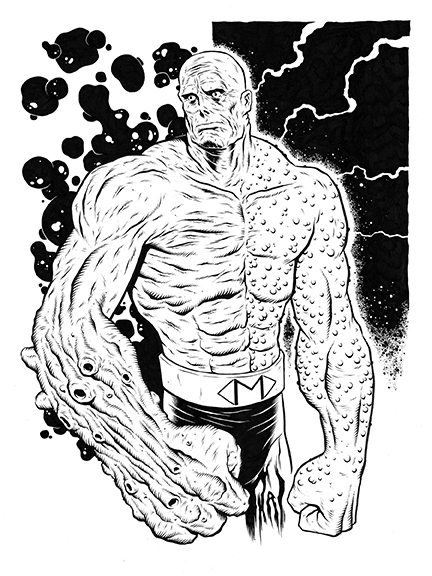
What do you value most in your studio practice?
I value the moments where I’m just moving freely and without fear. There are times where everything is just clicking – right amount of caffeine, clear head, body isn’t in too much pain and I’m in the proverbial zone.
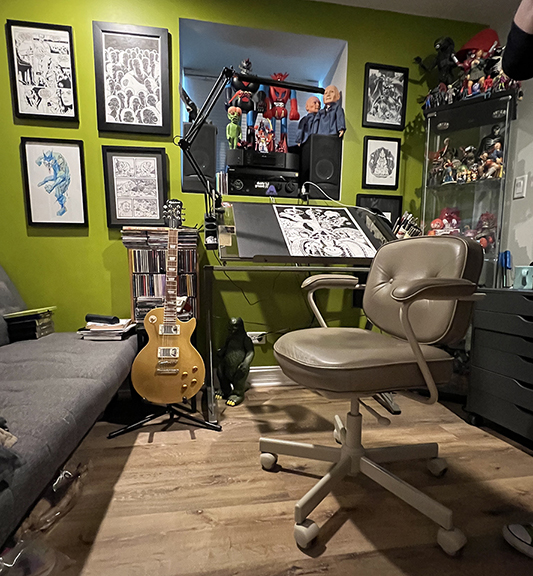
You are presenting at CAKE (Chicago Alternative Comics Expo) at the beginning of June? What’s the plan and why should people come out and check out this event?
It’s exciting to be getting back to conventions and shows. Prior to Covid I was getting a little burnt out on conventions and wasn’t seeing the value in them, especially not financially. Being at C2E2 this year reminded me that the real value is in getting to talk to readers face-to-face and get first-hand feedback. I’ve heard nothing but good things about CAKE so I think there’ll be a good turnout and it will be nice to be in a room filled with people who love comix.
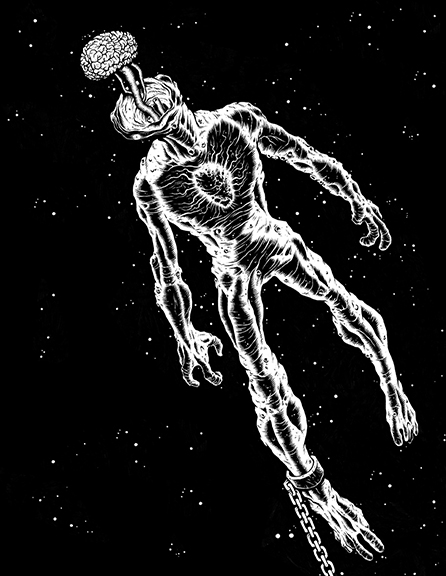
What are you currently working upon? Commissions? New stories? What’s the plan for the next few months?
I’m doing commissions while also working on my next comic which is called Sweet Sepulcher. It’s a 48-page horror comic that deals with addiction and consumerism. Over the last few years I’ve felt as though my drawing skills have developed to the point where I can make a really nice looking comics that will be a little less out there than Cankor. My hope is to have that ready to print by the end of 2023 and I will likely publish it myself.
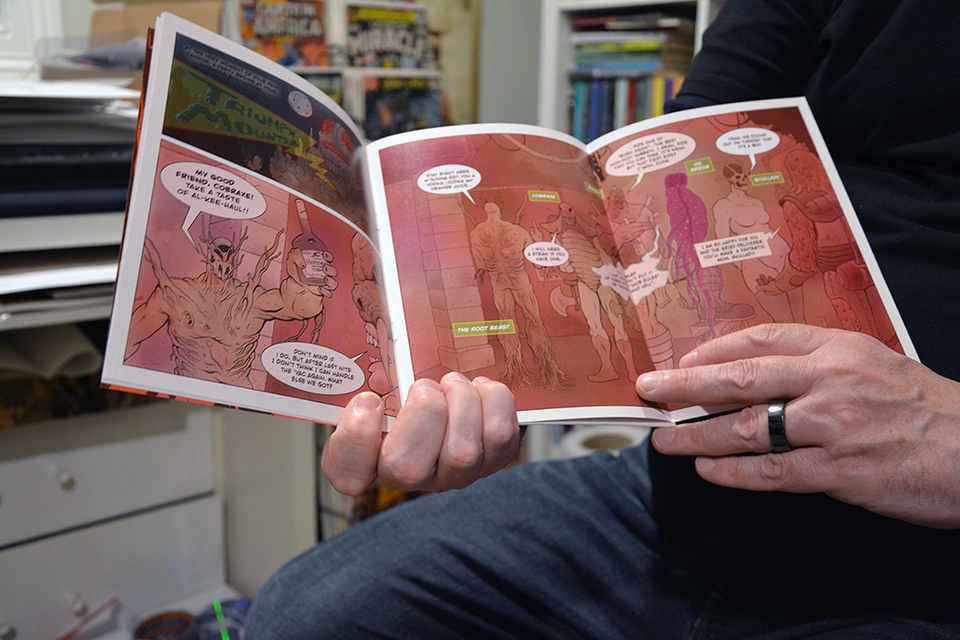
If you want to checkout this curious creator, Allison will be one of the panelist at this weekend’s CAKE (Chicago Alternative Comics Expo) at the Broadway Armory in Edgewater. For additional information on Matthew Allison, Cankor, CAKE, please visit:
Matthew Allison – http://www.cankorcomic.com/
Matthew Allison on Instagram – https://www.instagram.com/cankorr/?hl=en
Big Cartel – https://matthewallison.bigcartel.com/product/cankor-collected-edition
Collection Connection – https://www.youtube.com/watch?v=culLiBbkRFc
CAKE (Chicago Alternative Comics Expo) – https://www.cakechicago.com/
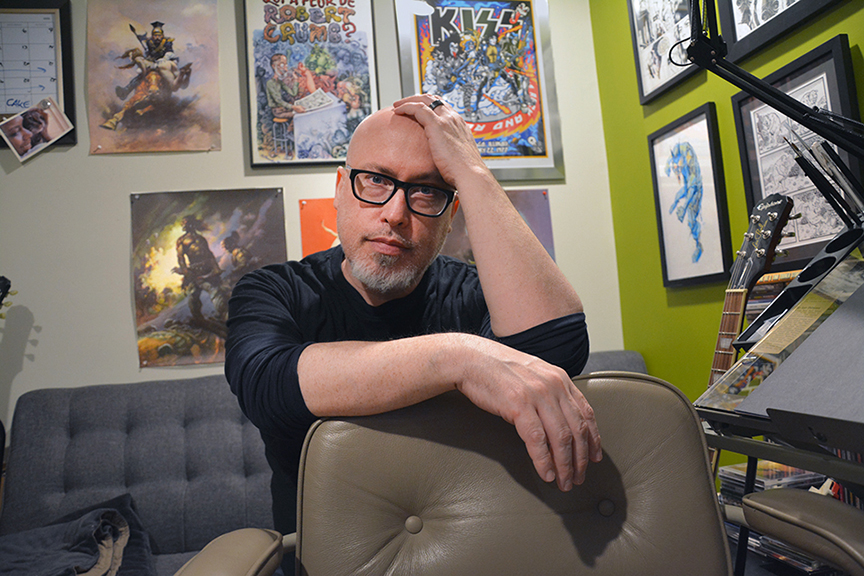
© All images courtesy and property of the artist, Matthew Allison.
Interview and portrait by Chester Alamo-Costello


